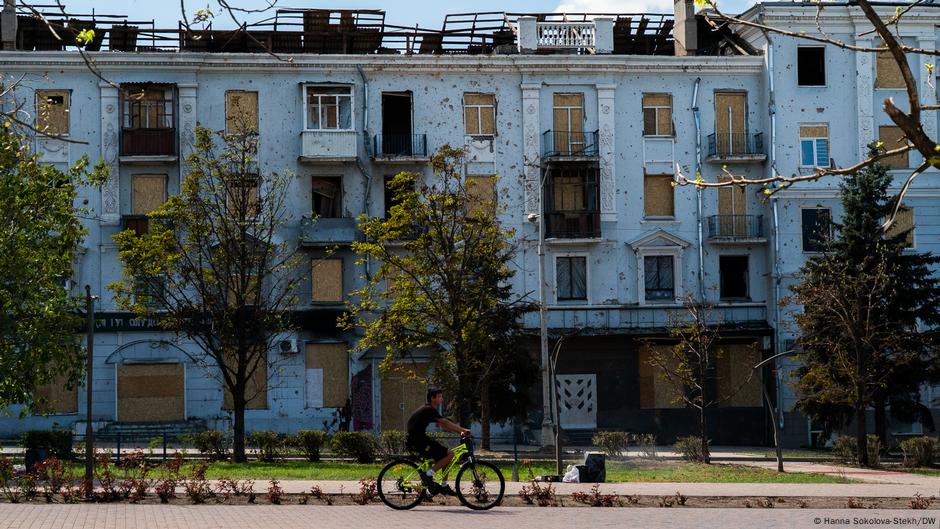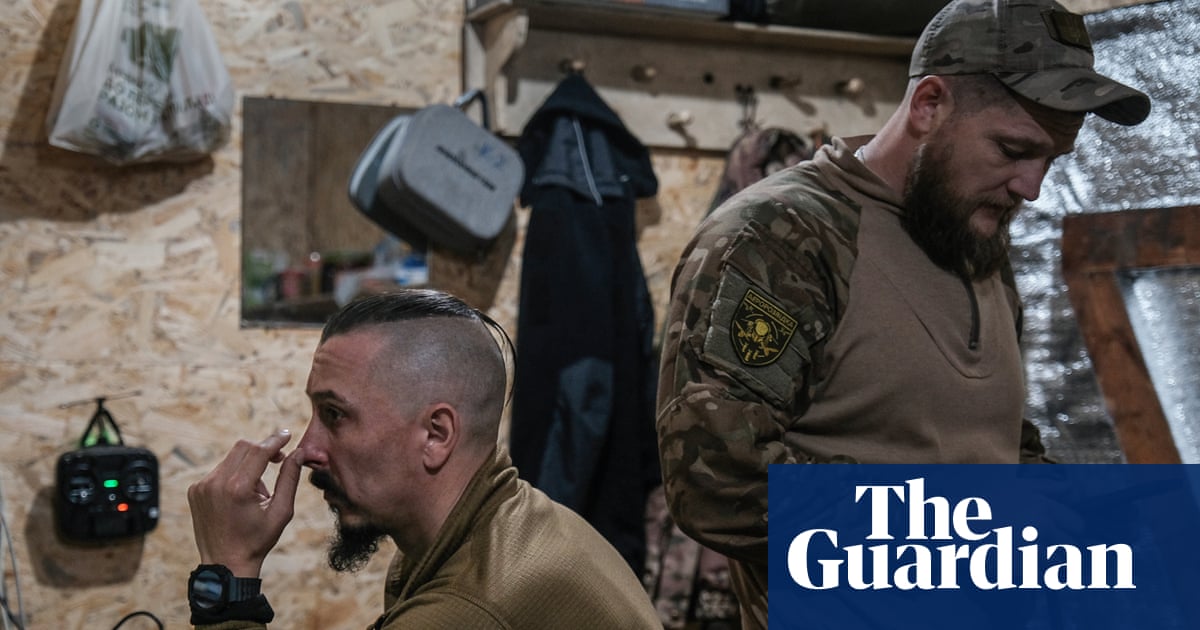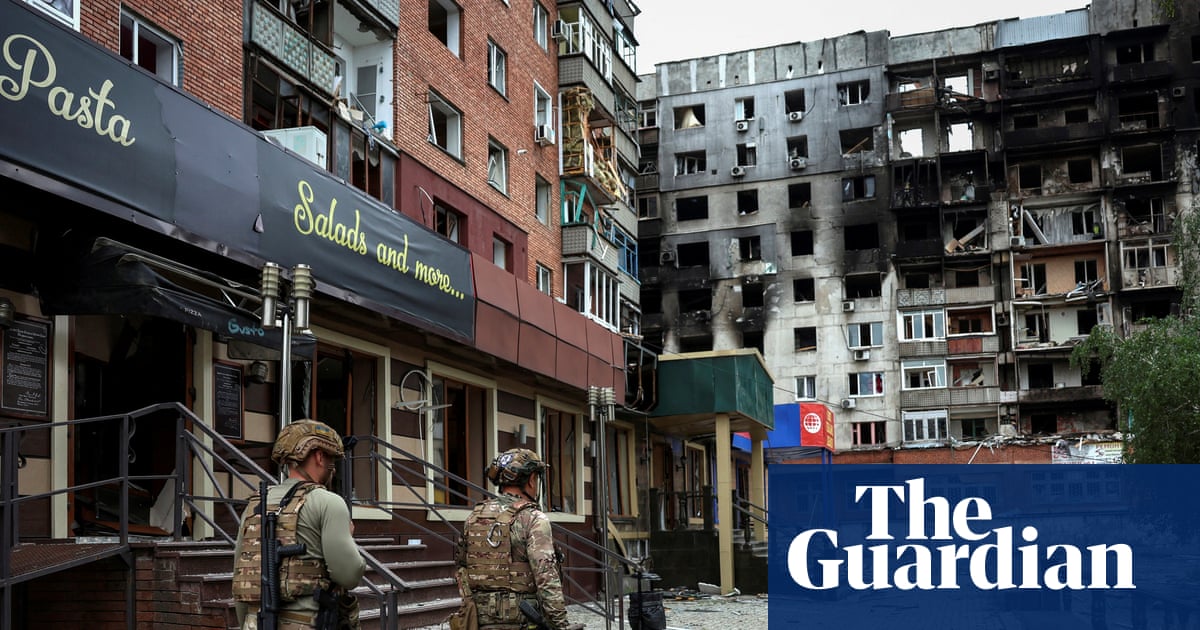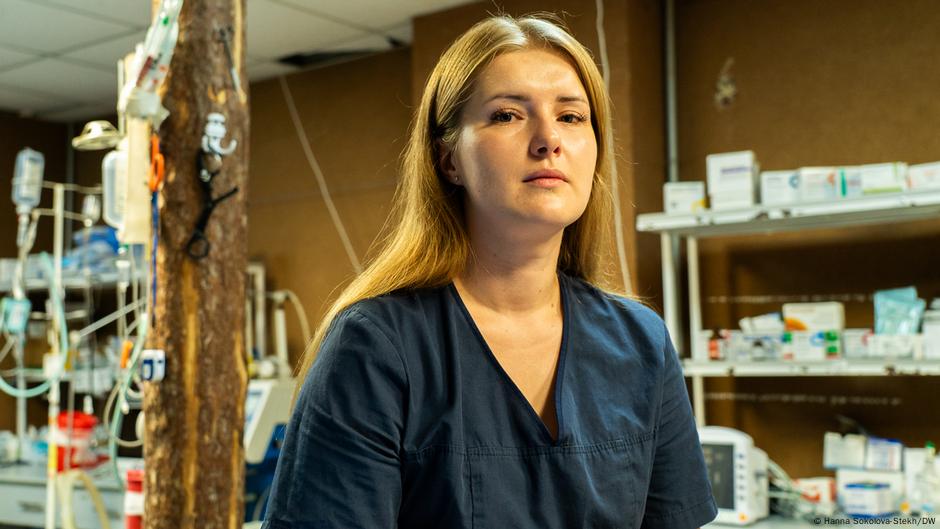#pokrovsk
#pokrovsk
[ follow ]
#russian-offensive #donetsk-region #urban-warfare #donbas #kupiansk #peace-negotiations #donetsk #myrnohrad
fromwww.theguardian.com
2 weeks agoThe slow death of Pokrovsk
For a time Pokrovsk was a haven, a wartime Ukrainian boom town because of its strategic position in the east, 30 miles (48km) from the front. But that was before the summer of 2024, when a rapid Russian advance engulfed the industrial centre in a shattering conflict, a duel only now reaching its endgame. The 18-month battle for Pokrovsk epitomises the current state of the Ukraine war: an attritional struggle in which gradual Russian advances have been made at extraordinary human cost.
Miscellaneous
fromwww.aljazeera.com
2 weeks agoRussia says it captured Pokrovsk, a key logistics hub in eastern Ukraine
Russian Chief of Staff Valery Gerasimov said Russian forces have also captured the city of Vovchansk in Kharkiv. Russian forces say they have captured the eastern Ukrainian city of Pokrovsk, a key logistics hub that has been under siege for almost two years. The Kremlin announced the news in a Telegram post on Monday, citing Russian Chief of Staff Valery Gerasimov.
Miscellaneous
Careers
fromBusiness Insider
1 month agoUkrainian drone teams overcame dense fog by using ground robots to spot Russia's advances, brigade says
The 93rd Separate Rifle Brigade used uncrewed ground vehicles to detect Russian troops in dense fog, enabling FPV drones to strike advancing forces near Pokrovsk.
Careers
fromBusiness Insider
1 month agoHeavy fog is punishing Ukraine's drones in the key city of Pokrovsk, where Russians are attacking on motorbikes and cars
Heavy fog is enabling Russian troops to advance into Pokrovsk by reducing drone effectiveness and allowing rapid assaults using foot soldiers, motorbikes, and civilian cars.
Miscellaneous
fromBusiness Insider
1 month agoFront-line combat video captures special ops Black Hawk raid into Pokrovsk, Ukraine's fiercest fight
Ukrainian special forces used Black Hawk helicopters to insert troops into Pokrovsk in a successful raid amid intense fighting to defend the strategic city.
fromLondon Business News | Londonlovesbusiness.com
1 month agoPokrovsk: Putin's bleeding point - London Business News | Londonlovesbusiness.com
For Ukraine, the logic of this war has never changed: make Russia pay dearly for every metre. Force them to bleed for ground, and in Pokrovsk, that strategy is paying dividends. Before Russia's full-scale invasion, Pokrovsk was a town of 80,000, a logistics hub and administrative centre in western Donetsk. Now it's a shattered shell. What remains is not a city, but a position: roads, supply routes, and terrain that shape the wider fight.
Miscellaneous
fromRadioFreeEurope/RadioLiberty
1 month agoRussian Troops Reported Inside Pokrovsk As Ukraine Says Forces Hold City's Defenses
Zelenskyy, in his October 26 nightly video address, said Russia had concentrated large numbers of forces around Pokrovsk and the nearby Myrnohrad community in the long-fought-over area in eastern Ukraine. "It is there, near Pokrovsk, that the Russians have concentrated their main strike force -- a significant number of enemy troops," Zelenskyy said. "Of course, this creates a difficult situation in Pokrovsk and all nearby areas -- fierce battles in the city and on its outskirts. There are enemy reconnaissance and sabotage groups in the city."
Miscellaneous
Miscellaneous
fromwww.theguardian.com
1 month agoUkraine war briefing: Ukraine says its troops still holding out in embattled Pokrovsk
Ukrainian forces are holding Pokrovsk amid intense fighting as Russian forces attempt to encircle the city while missile strikes escalate and civilian infrastructure is targeted.
fromIrish Independent
1 month agoRussia and Ukraine exchange strikes as 'key fuel pipeline' near Moscow hit
The operation was carried out late on Friday, according to a statement on the Telegram messaging channel. The agency, which is known by its acronym HUR, described it as a "serious blow" to Russia's military logistics. HUR said its forces struck the Koltsevoy pipeline, which spans 250 miles and supplies the Russian army with gasoline, diesel and jet fuel from refineries in Ryazan, Nizhny Novgorod and Moscow.
Miscellaneous
Europe news
fromwww.theguardian.com
1 month agoUkraine war briefing: Putin boasts of nuclear-driven torpedo that would swamp cities with radioactive tsunami
Russia successfully tested the Poseidon nuclear-propelled torpedo-drone, a novel retaliatory weapon capable of a radioactive tsunami and altering traditional nuclear deterrence norms.
Miscellaneous
fromenglish.elpais.com
1 month agoRussia advances in eastern Ukraine to encircle the strategic city of Pokrovsk
Russian forces are intensifying attacks around Pokrovsk, pressuring outnumbered Ukrainian defenders and causing civilian infrastructure damage and daily hardship for local workers.
Miscellaneous
fromRadioFreeEurope/RadioLiberty
2 months agoUkraine Battles To Restore Power As Russian Strikes Batter Grid Sites
Russian forces strike Ukraine's civilian energy infrastructure and press repeated assaults around strategic Pokrovsk while Ukrainian crews restore power and Kyiv denies Russian territorial claims.
Miscellaneous
fromRadioFreeEurope/RadioLiberty
4 months agoUkrainian Counterattacks Cut Russian Advance Near Pokrovsk But Civilians Still Suffer
Ukrainian forces have cut off Russian infiltration units north of Pokrovsk while civilians in Dobropillya endure severe bombardment and humanitarian shortages.
[ Load more ]























